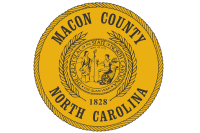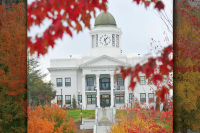The Naturalist's Corner: “There is a singer everyone has heard…”
 Cool to catch a couple of ovenbirds foraging in my yard. This one hopped up into the holly tree for a nanosecond. Don Hendershot photo
Cool to catch a couple of ovenbirds foraging in my yard. This one hopped up into the holly tree for a nanosecond. Don Hendershot photo
Robert Frost names that singer in the title of his 1916 sonnet “The Oven Bird.”
The ovenbird is a large (six-inch) ground-dwelling warbler common in closed-canopy deciduous and mixed forests from eastern British Columbia to Newfoundland and throughout the eastern U.S. to northern Arkansas. They are one of the most common woodland warblers of the Southern Appalachians. They winter from south Florida to Mexico and Central America and in the Caribbean islands.
This handsome warbler is olive-green to tawny brownish above. It is spotted, thrush-like below, has a bold eyering and an orange crown bordered by bold black stripes. And while this dapper bird is quiet pretty in your binoculars it blends well with the forest floor and can be infuriatingly hard to see.
Ovenbirds would not make “good” children — you know the kind seen and not heard. In fact the opposite, heard but not seen, is often true with ovenbirds. That is one of the reasons I enjoy birding with beginners. They are eager to see each and every bird they come across and will spend what many birders would consider an inordinate amount of time trying to ferret out this terrestrial gris-gris. I think most birders depend on the ovenbird’s abundance and figure they will get a glimpse of one at some point.
And it’s not like ovenbirds are skulkers; however, their cryptic coloration allows them to hide in plain sight. It’s cool to finally spot one and watch it. They are one of the few warblers (think Louisiana waterthrush and Connecticut warbler) that walk, rather than hop while foraging. Even in the canopy they are often found on limbs large enough they can walk along while foraging. I know, I know, you’ve seen one hopping. Juveniles hop before they learn how to walk.
The ovenbird gets its name from its nest. The nest is a small dome-like structure built on the ground out of dead leaves, twigs and grass, lined with animal hair and having a small opening in the side. It looks like a miniature oven. The female constructs the nest from within and once finished, will toss twigs and leaves atop it to camouflage it. If the chicks begin to knock the walls down as they grow — well, kids will be kids — mom doesn’t care because she’s done with it.
Related Items
Ovenbirds are early migrants to North America, often reaching nesting grounds in mid-April. They are generally single brooders, so also early fall migrants and begin heading to their wintering grounds in late August.
The mnemonic for the ovenbird’s song is almost always described as two syllables “teach-er teach-er teach-er” or “chur-tee, chur-tee, chur-tee.” But across much of their southern nesting range — including Western North Carolina — the more common song is a single “teach, teach, teach.”
And males with adjacent territories often sing together — the second starting as soon as the first finishes, leaving perplexed point-surveyors, like yours truly, scratching their heads wondering was that one ovenbird or two.
As Frost says the ovenbird is … “Loud, a mid-summer and mid-wood bird, / Who makes the solid tree trunks sound again.”
(Don Hendershot is a writer and naturalist. His book, A Year From the Naturalist’s Corner, Vol. 1, is available at regional bookstores or by contacting Don at This email address is being protected from spambots. You need JavaScript enabled to view it.)









